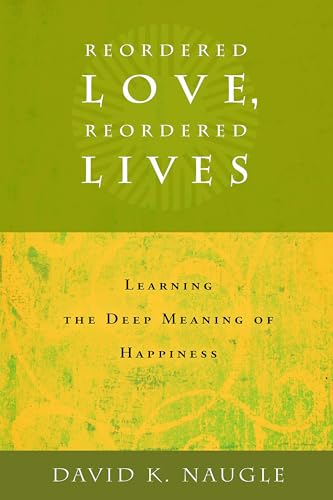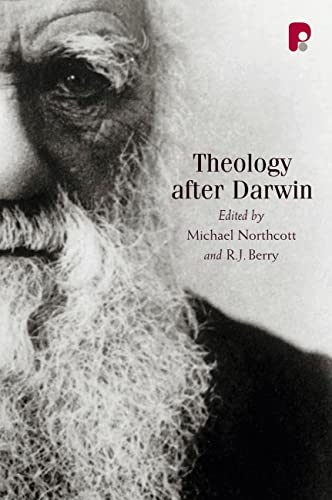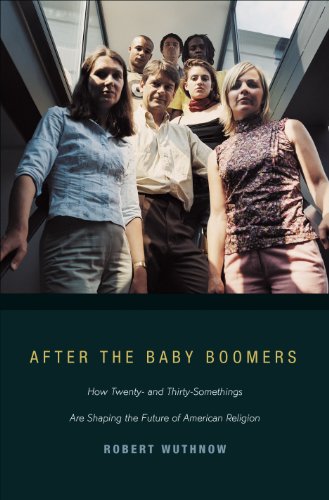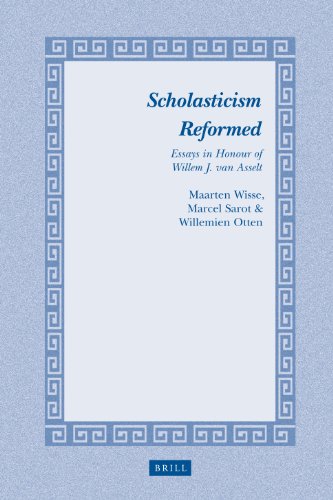The Westminster Confession into the 21st Century: Essays in Remembrance of the 350th Anniversary of the Westminster Assembly
Written by Ligon Duncan, ed. Reviewed By Matthew BarrettOver the past eight years, Ligon Duncan has led the way in orchestrating three volumes on the Westminster Confession (WC). In each volume Duncan compiles essays on the history and theology of the WC, each seeking to show the importance of the WC for the twenty-first century. The following will seek to bring out some of the major themes by highlighting some of the best chapters.
The first theme that permeates these three volumes is the persistent refutation of those such as Perry Miller, Karl Barth, Basil Hall, J. B. Torrance, Alister McGrath, and R. T. Kendall, who seek to place a wall of discontinuity between Calvin and Calvinists at Westminster. Mark Dever, in “Calvin, Westminster and Assurance,” argues against the claims of Kendall that while Calvin saw a “freeness” in salvation, the English puritans subverted Calvin by introducing works. Kendall believes Beza’s limited atonement is to blame, since the believer must question whether Christ actually died for him. Consequently, so the argument goes, the Puritan practice of self-examination is auto-soterism (saving oneself by one’s own life). Dever responds, “If this charge is true, it is a damning indictment of the gospel presented by the Westminster standards” (1:305). Countering Kendall, Dever shows that “Calvin taught that subjective assurance was distinct from saving faith, and came not through simply reflecting on one’s own process of believing, but through looking to Christ as the sole basis of salvation, living a Christian life, and the direct witness of the Holy Spirit in the believer’s heart” (1:320). Dever concludes by arguing that the English Puritans did not diverge from Calvin, but they also emphasized the troubled believer’s need to turn to the objective work of Christ. For example, for Richard Sibbes the life of the Christian is an evidence of his spiritual state (though not always discernable) and the Spirit is an internal witness to the troubled believer. “Yet, throughout his preaching, Sibbes was always clear that the objective work of Christ was the sole basis, not merely of salvation in abstraction, but of one’s own participation in it” (1:334). Therefore, contra Kendall, the objective work of Christ, yes even the limited extent of Christ’s atonement, is not cause for despair but assurance.
Paul Helm takes up the case for continuity in “Westminster and Protestant Scholasticism.” Helm, contra McGrath, Hall, and Kendall, demonstrates that the Calvinists that came after Calvin have been wrongly accused of adopting an arid rationalism, turning from Christology to an abstract focus on the divine decrees, subverting revelation for natural theology, replacing Calvin’s warm-styled Christocentrism with “speculative hair splitting,” and abrogating Calvin’s gospel of unconditional grace. To tackle but one of these accusations, it is alleged that the Reformed scholastics, in contrast to Calvin, made the divine decrees of first place and of axiomatic importance in their dogmatics. Helm thoroughly demonstrates, however, that “while Calvin’s treatment of predestination occupies a fairly subordinate place in the final edition of the Institutes, his treatment of providence remains appropriately early, and remains noticeably predestinarian in character” (2:102). In comparison to Westminster, Helm goes on to demonstrate that “although the order of their treatment of the doctrine is different, as is the style, the doctrine itself is substantially the same” (2:112).
A final chapter that again reiterates the case for continuity is William Traub’s “Karl Barth and the Westminster Confession of Faith.” Barth served to propel the myth of downgrade after Calvin, and he was very critical of the theology of the WC. For example, Barth rejects the emphasis the WC places on the ordo salutis, claiming it shifts emphasis away from God’s revelation to the Christian’s experience. Traub’s critique is penetrating:
Unfortunately, in his proper disdain for the psychologizing and historicizing of theology and revelation, Barth leaves no room for the application of God’s grace in the lives of believers. Barth seems unwilling to allow for any purpose of God’s grace beyond simply revealing who he is. Grace and salvation remain, at best, tangential to man and one is left not knowing if they have any meaning or have had any effect at all. (3:217)
Traub’s chapter exposes the dilemma evangelicals face today, namely, if Reformed orthodoxy is to be adopted, Barth’s theology must be laid aside. In Barth’s time, creedal formulations were abandoned, and Barth’s criticism’s of the WC did not help. (It is surprising that Barth was called upon to lecture on the Reformed creeds at Georg-August-Universität Göttingen when he confesses he had never even read the Reformed creeds prior to Göttingen!) Yet Barth is one of the most influential figures today, as his neo-orthodoxy continues. Traub, however, shows that despite Barth’s popularity, Reformed orthodoxy and neo-orthodoxy are incompatible.
A second theme to take notice of is the very helpful rebuttal of the New Perspective on Paul (NPP), an issue hotly debated today and represented in the writings of James Dunn, E. P. Sanders, and N. T. Wright. Donald Macleod, in his chapter “The New Perspective: Paul, Luther, and Judaism,” is lucid: “historic Lutheranism and historic Calvinism stand shoulder to shoulder on the core issue: the Judaism confronted by the Apostle Paul was a form of legalism” (3:302). Has the NPP rendered this view untenable? Macleod answers with a resounding no. The NPP is right that Judaism was a faith rooted in grace; this “does not prove, however, that there was no legalism in Jewish thought” and even “less does it prove that the Judaizers with whom Paul was in conflict were not legalists” (3:303). MacLeod explains, “Judaism, like Christianity, embraces a wide range of opinions, and even if the evangelical note was dominant there may well have been other voices much more legalistic in tone. These voices may have been very influential in the circles in which Paul (and Jesus) moved.” Sanders even concedes this when he admits that Matt 23 is an example of legalistic Jews. Yet Sanders thinks that the surviving Jewish literature does not reveal this. Macleod, in a brief survey through Judaic literature, shows Sanders to be utterly wrong on this point. Sanders admits (in Palestinian Judaism) that texts like 4 Ezra embarrass his thesis and do prove the existence of a Judaism functioning under self-righteousness, and yet Sanders dismisses such a case, arguing that examples like these are the minority to the prevailing view of covenantal nomism. Yet Macleod points out that it may have been within such pockets of Judaism like these that an opposition to Paul evolved. Moreover, we “have no right to conclude that, prior to AD 70, it represented only an insignificant minority of Jews” (3:306). Furthermore, a host of other texts also support such a mentality within Judaism (see Apocalypse of Baruch and Josephus). In short, the NPP mishandles key rabbinic material and ignores significant biblical texts (Isa 1:10–20; Amos 8:4–6; Jer 7:4–14; Matt 3:7–10; 15:1–20; Luke 18:9–14; John 3), which demonstrate the battle over self-righteousness.
The third theme that is to be recognized is the emphasis of Westminster on the doctrines of grace, an issue that continues to be hotly debated among Calvinists and Arminians today. The WC magnificently articulates and represents the doctrines of grace in biblical perspective. However, the Calvinism of the WC was severely attacked by Charles Finney, the nineteenth-century revivalist Presbyterian-turned-Congregationalist. In the theological lineage of the New Haven Divinity of Nathaniel Taylor and Joseph Bellamy, Finney rejected Westminster’s doctrines of original sin, the bondage of the will, and the necessity of efficacious grace and supernatural regeneration, as evident in his sermon “Sinners Bound to Change Their Own Hearts.” B. B. Warfield concluded that Finney was a return to Pelagius, as Finney argued that there is nothing in religion beyond the ordinary powers of human ability. This led Finney on the issue of justification to embrace a “works-righteousness that exceeded the Counter-Reformation position” (2:391). Unfortunately, Finney’s pragmatism continues today, and in some circles Finney’s Systematic Theology continues to be used as a supplementary text to Scripture. Horton is right in concluding that Finney’s naturalistic religion is a major step towards liberalism and must be rejected if our churches today are to remain orthodox, let alone Reformed. Lest evangelicals think they are exempt from such a theology, Horton reminds the reader of a recent interview where Jerry Falwell claimed Finney as “one of my greatest heroes” (2:411). Horton’s chapter is a sobering reminder that without faithful subscriptions to biblical confessions and creeds, churches can easily slip back into the theology of Finney.
A fourth and final doctrine that permeates these volumes is covenant theology (CT). The most detailed chapter comes from Ligon Duncan, who writes his essay as an “attempt to sound a call for the revival of classical federal theology in our gospel preaching and theological reflection” (3:479). Duncan begins by listing five reasons he believes that covenant theology has been neglected: (1) There is a general impatience amongst us with historical theology. (2) The function of CT (even in Reformed circles) has either been limited to sacramental discussions or deployed in an eccentric form as a justification for some specialized view of children in the household of faith. (3) The widespread influence of dispensationalism in evangelical and Reformed circles has eroded the effect and appreciation of CT. (4) Objections to systematic theology come to bear on CT also. (5) CT has suffered attack from those within the Reformed community (Dorner, Lindsay, Torrance, Rolston, Kendall, Bell, Heron, Barth). Duncan enlists even John Murray as one who has done “semantic back-peddling on the covenant of works which has proved unhelpful to his theological descendents” (3:481). Duncan, relying to a degree on Donald Macleod, then gives a very meticulous response to fifteen of the most common objections to federal theology, specifically those voiced by J. B. Torrance and Karl Barth. To give but one example, it is objected that federalism’s inter-trinitarian covenant opens up dualism in God. However, Duncan shows that the pactum salutis or covenant of redemption is a biblical inference from Scripture, where it is the Father who sends the Son (John 5:37; 6:44, 57; 8:16–18; 12:49; 14:24), the Son who obeys and dies (John 14:6; Acts 4:12; 1 Tim 2:15), and the Spirit who is sent by the Father and the Son to testify concerning Christ (John 14:26, 15:26). “These tasks were not assigned at the incarnation, but were embraced before time in the eternal purposes of God, in which the three persons of the Godhead, in one common purpose, chose to save sinners (1 Pet 1:20). Thus, the covenant of redemption does not open up God to dualism since it is one common purpose within the Godhead to save sinners, despite the diversity of function within the outworking of this plan of redemption” (3:486–87). Likewise, Bavinck states, “The pact of salvation makes known to us the relationships and life of the three persons in the Divine Being as a covenantal life, a life of consummate self-consciousness and freedom” (Reformed Dogmatics, 3:214). Duncan’s response to these fifteen objections not only corrects caricatures but presents arguments in favor of CT, demonstrating that it cannot be easily dismissed.
In conclusion, the reception of these volumes remains to be seen. Those of dispensational and Arminian persuasions will disagree with much, if not most, of what these three volumes represent. However, those of a Reformed background and even those not persuaded entirely by covenant theology but committed to Calvinism’s view of grace (i.e., Reformed Baptists) will find themselves pleased and encouraged by these essays. If a criticism is to be given of these volumes, it is that there are not yet chapters on the attributes of God, the person and work of Christ, or the inerrancy of Scripture. Nevertheless, such chapters may be forthcoming, and Reformed evangelicals will warmly welcome from Duncan a fourth and final volume, as these previous three have proved that the Westminster Confession is relevant, significant, and necessary today.
Matthew Barrett
Matthew Barrett is tutor of systematic theology and church history at Oak Hill Theological College in London and executive editor of Credo Magazine.
Other Articles in this Issue
Most of us, I suspect, develop fairly standard ways, one might even say repetitive ways, to appeal to the motivations of our hearers when we preach the gospel...
How to Write—and How Not to Write—A Review: An Appreciative Response to Reviews of Ancient Near Eastern Themes in Biblical Theology by Dempster and Edgar
by Jeffrey J. NiehausI want to thank Themelios for the unusual opportunity to interact with two reviewers of my book Ancient Near Eastern Themes in Biblical Theology...
Parallels, Real or Imagined? A Review Article of Jeffrey J. Niehaus, Ancient Near Eastern Themes in Biblical Theology
by William EdgarWhen I came to Westminster Theological Seminary in Philadelphia as a young student in the 1960s, two things struck me...
Why Evangelicals Should Ignore Brian McLaren: How the New Testament Requires Evangelicals to Render a Judgment on the Moral Status of Homosexuality
by Denny BurkIn 2006 on Christianity Today’s leadership blog, Pastor Brian McLaren urged evangelical leaders to find a “Pastoral Response” to their parishioners on the issue of homosexuality...
A Member of the Family or a Stranger? A Review Article of Jeffrey J. Niehaus, Ancient Near Eastern
by Stephen DempsterWe cannot overstate how important knowing the context is for understanding the significance of any communication, whether that is a simple word, sentence, paragraph, larger text, sign, photograph, or cultural cue...







